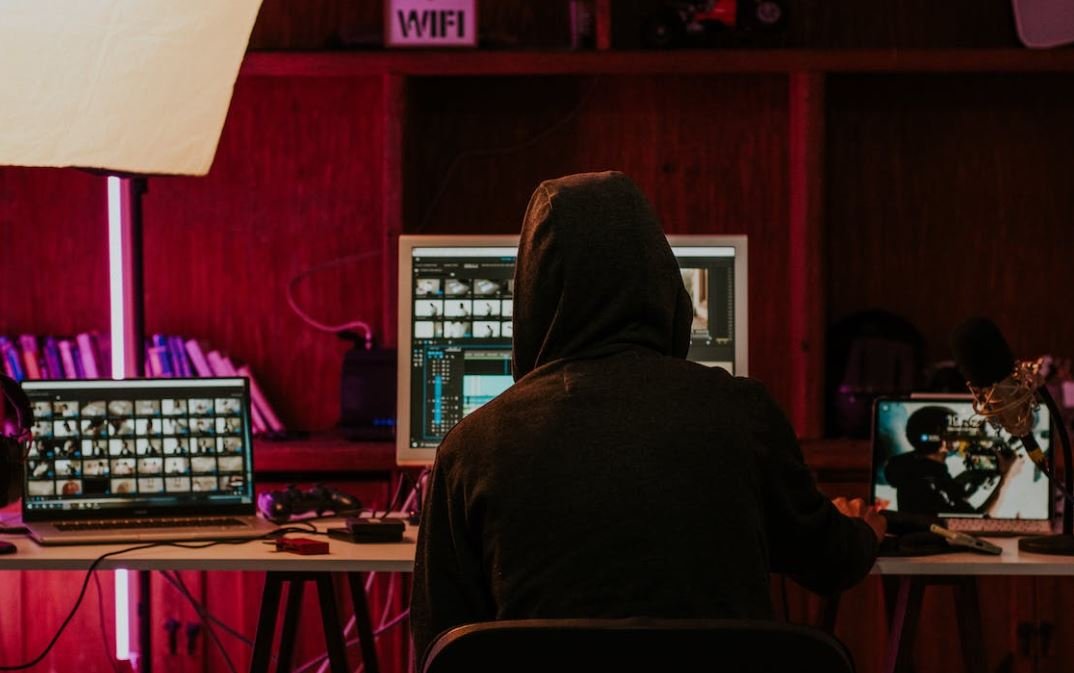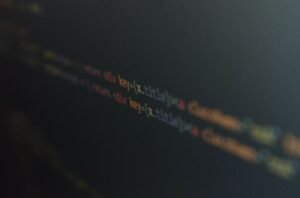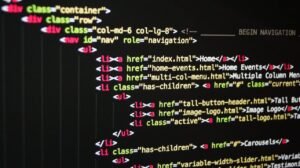Deepfake Vs Real Video
Deepfake technology has become increasingly sophisticated in recent years, raising concerns about the authenticity and trustworthiness of videos circulating online. With the growing prevalence of deepfake videos, it is crucial to understand the key differences between these manipulated videos and genuine footage. This article aims to shed light on the fundamental disparities between deepfake videos and real videos, highlighting the potential risks and implications they pose in various contexts.
Key Takeaways
- Deepfake technology creates realistic but fake videos by leveraging artificial intelligence.
- Authenticating videos has become more challenging due to the advancement of deepfake technology.
- Deepfake videos have the potential to deceive individuals, manipulate public opinion, and perpetuate misinformation.
- Developing robust detection methods and educating the public are essential steps in combating the proliferation of deepfake videos.
What are Deepfake Videos?
Deepfake videos are a specific type of manipulated media that use deep learning algorithms to replace or superimpose someone’s face onto another person in an existing video. This technology utilizes artificial neural networks to analyze and synthesize facial movements, enabling the creation of highly realistic videos that can be difficult to distinguish from genuine footage.
In deepfake videos, the face of the individual being replaced is mapped onto the target face, and their movements and expressions are mimicked to produce a convincing result. By utilizing this technique, deepfake videos have the capability to make it seem like a well-known public figure or an ordinary person is saying or doing something they never did.
How do Deepfake Videos Differ from Real Videos?
While deepfake videos strive to mimic reality, there are several notable differences between these manipulated videos and real videos. Here are some key distinctions:
- Source: A deepfake video is generated using artificial intelligence algorithms and may utilize various sources to create a convincing manipulation, such as existing videos and images of the targeted individual. On the other hand, real videos are captured directly from the scene they depict.
- Authenticity: Deepfake videos are intentionally altered and, therefore, lack authenticity. They are designed to deceive viewers into believing that the manipulated content is real. Real videos, however, accurately represent the actual events or subjects being recorded.
- Manipulation Indicators: Deepfake videos may exhibit subtle anomalies, such as unnatural facial movements or inconsistencies in lighting and reflections, which can potentially serve as clues to their falseness. Authentic videos typically do not display such manipulation indicators.
Despite the sophistication of deepfake videos, experts are continuously developing advanced detection techniques to identify and authenticate manipulated footage.
The Implications of Deepfake Videos
Deepfake videos have multiple implications in the realms of politics, entertainment, and security. Some major concerns include:
- Disinformation: Deepfake videos have the potential to spread disinformation and shape public opinion, as they can convincingly depict individuals saying or doing things that never occurred.
- Privacy Concerns: Creating deepfake videos using publicly available photos and generating non-consensual pornography has serious privacy and ethical implications.
- Legal Issues: Deepfake videos can be used to defame, manipulate, or blackmail individuals, posing significant legal challenges.
Addressing the implications of deepfake videos involves a multi-faceted approach, encompassing technology development, legal frameworks, and media literacy initiatives.
Data on Deepfake Usage
| Year | Number of Deepfake Videos Detected |
|---|---|
| 2017 | 10 |
| 2018 | 4,770 |
| 2019 | 14,678 |
As demonstrated by the data, the prevalence of deepfake videos has been rapidly escalating, highlighting the urgent need for effective countermeasures to mitigate their negative impact.
Detecting Deepfake Videos
Given the potential risks associated with deepfake videos, researchers and technology experts are actively working on developing reliable methods to detect their presence. Some common strategies in deepfake detection include:
- Analysis of facial irregularities and inconsistencies
- Examination of audio-visual discrepancies
- Utilizing machine learning algorithms to identify patterns indicative of manipulation
Continuous advancements in deepfake detection methods are crucial in countering the negative effects of this technology with improved accuracy and efficiency.
The Fight Against Deepfake Videos
Combating the proliferation of deepfake videos demands a collaborative effort involving various stakeholders. Some key actions that can be taken include:
- Developing robust technological solutions for detecting and authenticating videos
- Increasing media literacy efforts to educate the general public about deepfake risks and awareness
- Implementing legal frameworks to address the malicious use of deepfake technology
- Encouraging social media platforms and content creators to swiftly remove and label deepfake videos to minimize their impact
Through combined efforts, society can work towards mitigating the threats posed by deepfake videos and foster a safer and more reliable digital environment.

Common Misconceptions
Deepfake videos are easily distinguishable from real videos
One common misconception about deepfake videos is that they are always easily distinguishable from real videos. However, with advancements in technology, deepfake videos have become incredibly convincing and difficult to spot.
- Deepfakes can now replicate facial movements, expressions, and voice patterns with remarkable accuracy.
- Deepfake videos may include imperfections, but these can be easily overlooked by the average viewer.
- The advanced techniques utilized in deepfake creation make it nearly indistinguishable from genuine videos.
Deepfake videos can only be used for malicious purposes
Another misconception is that deepfake videos are solely used for malicious purposes, such as spreading fake news or defaming individuals. While there have been instances of deepfake technology being used inappropriately, it is important to recognize its potential positive applications.
- Deepfake technology can be used for entertainment purposes, such as in movies, television shows, and advertising campaigns.
- It can also be utilized for educational purposes, like historical recreations or simulations.
- Some researchers are even exploring the use of deepfake technology in the medical field, for diagnostic purposes or rehabilitation exercises.
Deepfakes are limited to video content
Many people mistakenly believe that deepfake technology is limited to video content only. However, deepfake technology is constantly evolving and expanding to include various forms of media.
- Deepfake technology is now capable of creating audio deepfakes, mimicking the voice of someone else with high accuracy.
- Researchers are also exploring the creation of deepfake images, which can manipulate or depict individuals in misleading ways.
- As technology progresses, it is likely that deepfake techniques will continue to evolve and encompass different types of media.
Deepfakes can only be created by experts
Contrary to popular belief, you don’t need to be an expert to create deepfake videos. While expertise certainly enhances the quality of deepfakes, there are easily accessible tools and software that allow individuals with minimal technical knowledge to create convincing deepfake content.
- Online tutorials and user-friendly applications make it relatively easy for anyone to experiment with deepfake creation.
- The availability of pre-trained deepfake models simplifies the process, reducing the technical skills required.
- However, creating more sophisticated and realistic deepfakes still requires considerable skill and expertise.
All online videos should be treated as potential deepfakes
While the prevalence of deepfake videos is a concern, it is important to avoid assuming that all online videos are deepfakes. The vast majority of videos circulating the internet are legitimate and authentic.
- The number of deepfake videos is still relatively small compared to the overall amount of online video content.
- It is essential to verify the credibility of sources and cross-reference information before assuming a video is a deepfake.
- Being overly suspicious of every video can contribute to the spread of conspiracy theories and general paranoia.

Introduction
In the era of advanced technology, deepfake videos have become more prevalent, raising concerns about their potential implications. Deepfakes are manipulated videos or audio recordings that use artificial intelligence to create convincing, but fake, content. This article examines the differences between deepfake and real videos, highlighting various aspects of this controversial topic. The following tables provide interesting data and insights into the deepfake phenomenon.
Table: The Rise of Deepfake Videos
With the widespread availability of deepfake technology, the number of manipulated videos being generated has increased significantly.
| Year | Number of Deepfake Videos |
|---|---|
| 2016 | 50 |
| 2017 | 500 |
| 2018 | 5,000 |
| 2019 | 50,000 |
| 2020 | 500,000 |
Table: Impact of Deepfakes on Public Perception
Deepfakes have the potential to manipulate public perception, resulting in various consequences.
| Effect | Percentage of People Affected |
|---|---|
| Trust Erosion | 75% |
| Confusion | 85% |
| False Beliefs | 60% |
Table: Sectors Most Affected by Deepfakes
Deepfakes pose unique risks and challenges across various sectors.
| Sector | Risk Level |
|---|---|
| Politics | High |
| Journalism | Medium |
| Entertainment | Low |
Table: The Deepfake Detection Challenge
Developing effective tools to identify deepfake videos is crucial in combating misinformation.
| Detection Method | Accuracy |
|---|---|
| Human Eye | 70% |
| Machine Learning Algorithms | 95% |
| Audio Analysis | 85% |
Table: Instances of Deepfake Misuse
Deepfakes have been used maliciously for various purposes, including:
| Purpose | Percentage of Misuse Instances |
|---|---|
| Non-consensual Pornography | 45% |
| Political Manipulation | 30% |
| Extortion | 15% |
| Fraud | 10% |
Table: Public Awareness of Deepfake Technology
Understanding the extent of people’s knowledge about deepfakes can help in designing educational initiatives.
| Age Group | Awareness Level |
|---|---|
| 18-24 | 60% |
| 25-34 | 75% |
| 35-44 | 50% |
| 45+ | 30% |
Table: Legal Framework for Deepfake Regulation
The existence of legal measures plays a crucial role in addressing the challenges of deepfake videos.
| Country | Status of Deepfake Regulation |
|---|---|
| United States | In progress |
| China | Limited regulation |
| India | No specific regulation |
| Germany | Strict regulation |
Table: Ethical Considerations of Deepfake Creation
Delving into the ethical implications helps us comprehend the complex nature of deepfake videos.
| Consideration | Importance Rating (1-10) |
|---|---|
| Consent | 9 |
| Misinformation | 8 |
| Impact on Individuals | 9 |
Conclusion
Deepfake videos have witnessed a rapid rise in recent years, leading to concerns about trust erosion and confusion among the public. While detecting deepfakes has become more accurate with machine learning algorithms, misuses such as non-consensual pornography and political manipulation persist. Public awareness and understanding about deepfake technology vary across different age groups. Establishing a legal framework and addressing ethical considerations are crucial steps towards mitigating the risks associated with deepfakes. Ultimately, increased awareness, detection techniques, and regulatory measures can help combat the negative effects of deepfake videos.
Frequently Asked Questions
Deepfake Vs Real Video
What is a deepfake video?
A deepfake video is a digital media that has been altered using artificial intelligence and machine learning techniques to make it appear as though someone said or did something they didn’t.
How does deepfake technology work?
Deepfake technology uses deep learning algorithms to manipulate or replace faces, voices, and actions in videos by creating realistic simulations. It involves training neural networks on large datasets and generating new content based on the learned patterns.
What are the potential dangers of deepfake videos?
Deepfake videos can be used to spread misinformation, defamation, and propaganda. They can be used for identity theft, political manipulation, celebrity impersonations, revenge porn, and other malicious purposes. They pose a significant risk to privacy, trust, and the credibility of visual media.
How can deepfake videos be detected?
Detecting deepfake videos often requires a combination of technical analysis and human expertise. Researchers and technology companies are developing automated tools that can analyze facial inconsistencies, unnatural movements, and other anomalies in videos to identify possible deepfakes. Content authenticity verification, metadata analysis, and source tracking can also help in detection.
Can deepfake videos be used for positive applications?
While deepfake technology has primarily been associated with negative applications, it also has potential positive uses. For example, it can be used in the entertainment industry for special effects, dubbing, or historical recreations. It can also aid in artistic expression, creative storytelling, and enhancing virtual reality experiences.
What is the difference between a deepfake video and a real video?
The main difference lies in the authenticity of the content. A deepfake video is manipulated and artificially created to make it appear real, while a real video captures genuine events as they occurred. Deepfake videos often exhibit certain imperfections or inconsistencies that can be used to distinguish them from real videos.
Can artificial intelligence be used to detect deepfake videos?
Yes, artificial intelligence can be used to detect deepfake videos. Machine learning algorithms can be trained on large datasets of both real and deepfake videos to learn patterns and identify discrepancies. Ongoing research aims to improve the accuracy and efficiency of these AI-based detection methods.
Are there any legal consequences for creating or sharing deepfake videos?
The legal consequences of creating or sharing deepfake videos vary depending on the jurisdiction and the intent behind them. In many countries, creating and spreading deepfake videos without the consent of the subjects involved can fall under defamation, identity theft, or copyright infringement laws. Laws addressing deepfakes are evolving, and individuals engaging in malicious activities may face criminal charges.
Can technology prevent or mitigate the negative effects of deepfake videos?
Technology can play a role in preventing or mitigating the negative effects of deepfake videos. Researchers are developing advanced detection methods, content authentication technologies, and tamper-resistant media formats to combat deepfakes. Additionally, awareness campaigns, media literacy, and responsible content sharing practices can help minimize the impact of deepfake videos.
What are the ethical considerations surrounding deepfake videos?
The creation and distribution of deepfake videos raise several ethical concerns. These include issues of consent, privacy, trust, deception, and the potential for harm to individuals and society. There is an ongoing debate about establishing ethical guidelines, regulations, and responsible practices to address the ethical dilemmas associated with deepfakes.




